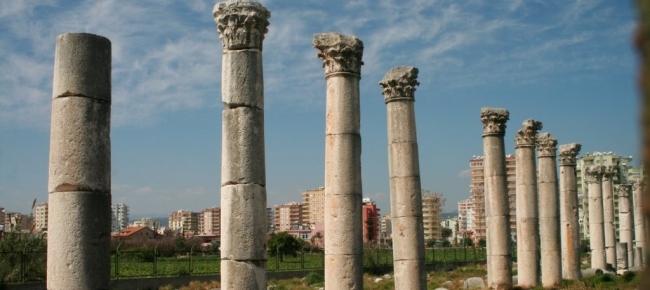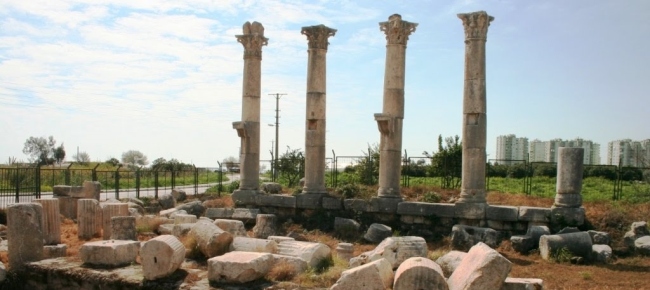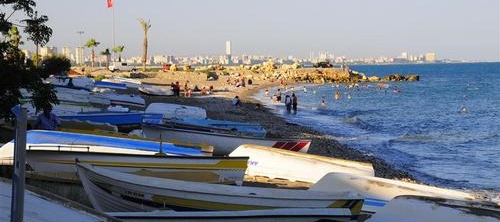Mersin is full of so much history and gorgeous scenery and yet, living here, I seldom get further than my front door so the opportunity to join a couple of amateur photographers as they travelled deep into the Tarsus Mountains to explore the ruins of a monastery was an opportunity just too good to miss.
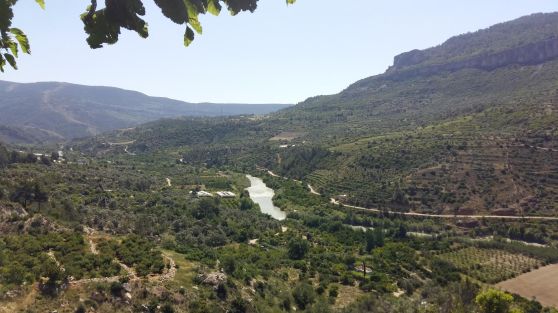
After an early start, we left the shimmering Mersin coastline behind us and followed the Gosku River up into the winding mountains, past fertile plains and sweet smelling pine forests before finally arriving at our destination – Alahan Monastery.

Built over 1500 years ago the monks of Alahan must have known they were onto a good thing when they chose this spot. It’s a prime location rising 1300 feet above the surrounding valleys with numerous caves, natural water courses and good crop land below. The ruins are still in excellent condition despite earthquakes, a few wars and no doubt general tomfoolery of locals and can be traversed fairly easily (even with my banged-up knee).


We entered the Monastery via the Basilica where the reliefs on the columns and remaining stone are a good example of the Byzantine era. Past the Basilica is a small Baptistry for pilgrims to be baptised before following the remains of the colonnade to another larger Basilica. Archaeologists believe that the larger Basilica is a good example of domical construction using carefully cut and assembled stone without mortar to build the domed ceiling. The larger Basilica is highly praised for its resemblance to Istanbul’s Hagia Sophia (and arguably built before the famed Hagia Sophia). The stone and slabs are decorated with reliefs of fish, foliage as well as clearly defined Christian crosses.
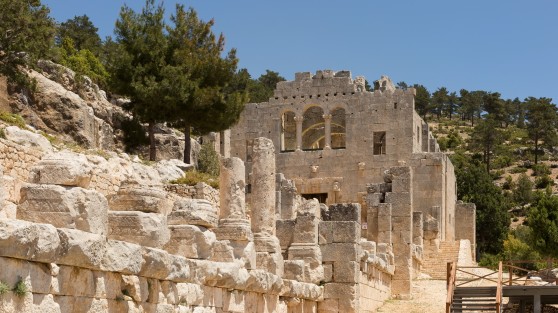
Credit: N. Habbas
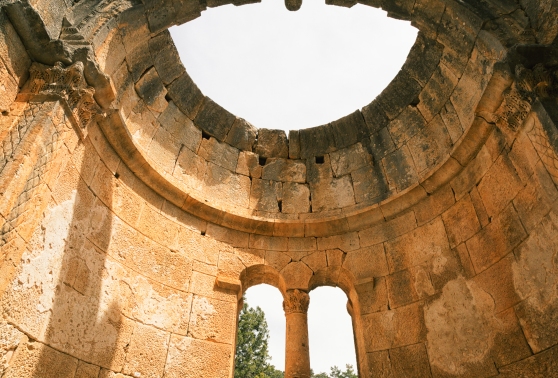
Credit: N. Habbas
The Monastery has been extensively restored and was re-opened to the public in 2015 and is included on UNESCO’s Tentative World Heritage List.
After spending an hour at the Monastery, we travelled back down into the valley passing fields of red poppies as well as row after row of kayısı (apricot) trees before returning back to Mersin, stopping along the way for the well-known Mersin favourite – tantuni.
Entrance fee: 5TL or free if you have the Müze pass (Museum pass).
Getting there: Approximately 3 hours (including 2 stops), take the D400 to Silifke and then follow the D715 to Mut. Alahan Monastery is located about 20km past Mut. Keep an eye out for signage as it is easy to miss due to current road works.
Best time to go: We were here on a weekday and had the place to ourselves. Locals tell us that weekends can be quite busy with bus tours visiting from neighbouring cities.
Tip: If visiting in summer it will be hot, hot, hot. Take water and wear sunscreen.
_________________________________________________________________________
Loving this blog? Please help me build my audience and share with like minded people who, like you, love to travel and love Turkey. You can also subscribe or like me on Facebook for all updates.
